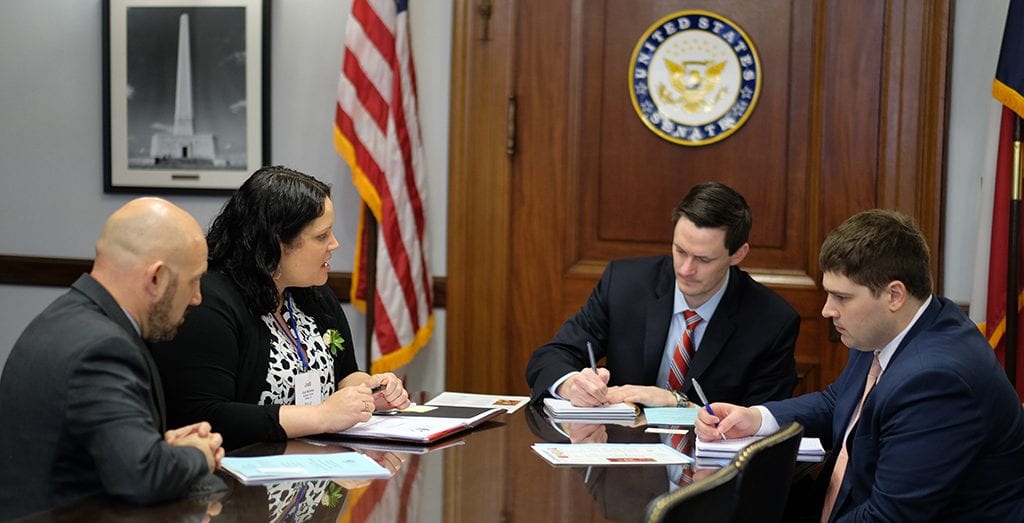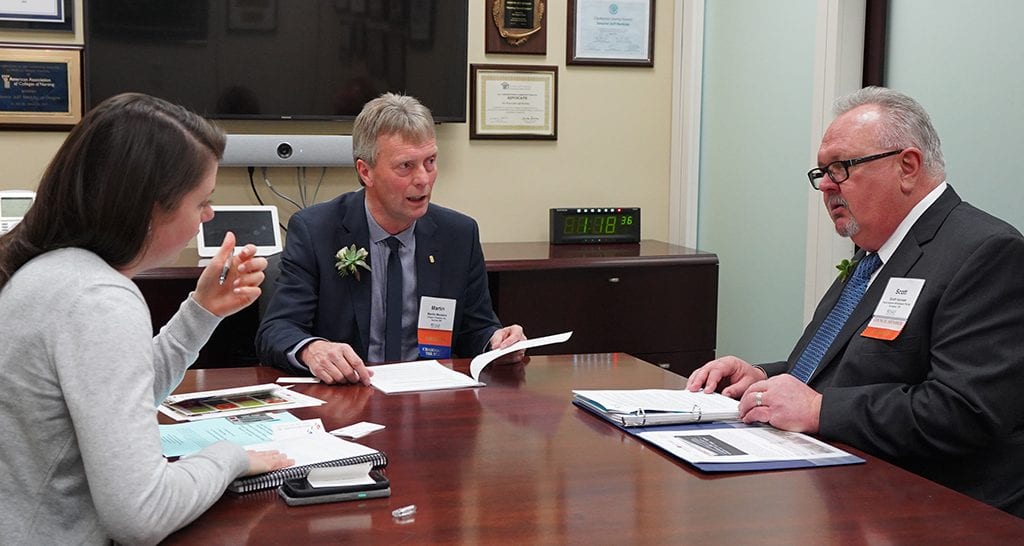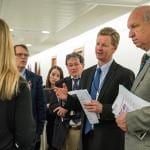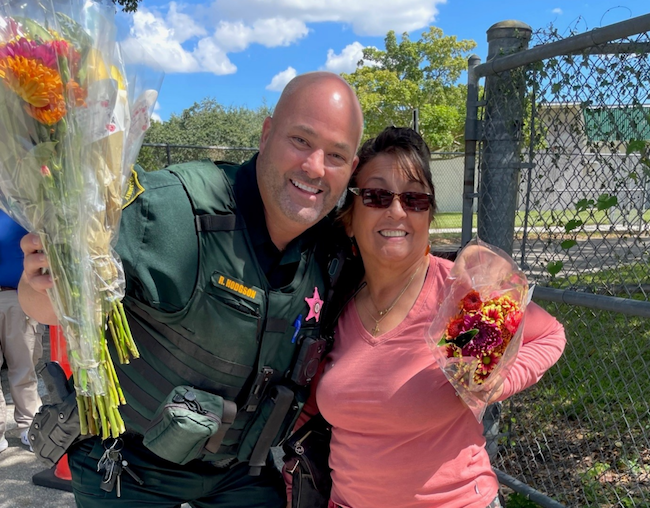
Jodi McShan, AAF, of McShan Florist in Dallas, Texas, and Charles Ingrum of Dr. Delphinium Designs in Dallas, meet with lawmakers in the office of Sen. Ted Cruz (R-Texas) during CAD. Such visits have laid the ground for productive follow-up in the month since the event.
Weeks after dozens of growers, wholesalers, suppliers and retailers traveled to Washington, D.C., for the Society of American Florists’ Congressional Action Days (CAD), lawmakers are giving heightened attention to key industry issues, thanks to the ongoing efforts of SAF and its members.
Since the mid-March event, SAF has coordinated with 21 congressional offices on follow-up requests for more information on the Floriculture and Nursery Research Initiative and the Floriculture Crops Summary. During CAD, SAF members met with lawmakers and staff to explain the value of FNRI research and statistical reporting to the industry.
Before taking to the Hill during CAD, Terril Nell, Ph.D., AAF, research coordinator for the American Floral Endowment, briefed SAF members on the research and how it has played a central role in creating new technology and best practices in pest and disease management.
“Research is all about your business, it doesn’t matter the segment,” he said. “Money toward research makes it happen.”
Marvin Miller, Ph.D., AAF, of Ball Horticultural in West Chicago, Illinois, stressed the importance of the Floriculture Crops Summary during the briefing, noting that it provides the floriculture industry with critical information, including data on which crops are being sold, and in what quantities, along with where the crops are grown. All of this information, Miller pointed out, helps industry members plan ahead.
Within days of CAD, SAF began fielding inquiries from lawmakers’ offices for more information on FNRI and the report. SAF staff also reached out directly to specific staff to keep the momentum generated from the visits going.
Those follow-up conversations among lawmakers, SAF and SAF members show the power of first-hand testimonials — and the important role industry members can play in shaping funding priorities, said Shawn McBurney, SAF’s senior director of government relations.
“As the national association for the entire floral industry, SAF maintains a presence on Capitol Hill year-round, and the relationships we build certainly help open the door to these important conversations,” he said. “But it’s critical to the health of our industry that we complement our year-round efforts with these one-on-one meetings between our members and lawmakers, so that representatives, senators and their staff all hear directly from the people they represent.”

SAF Chairman Martin Meskers (center) of Orgeon Flowers in Aurora, Oregon, and Scott Isensee of Frank Adams Wholesale in Portland, meet in the office of Sen. Jeff Merkely (D-Oregon) during CAD.
The CAD funding requests this year — to support FNRI and the renewed publication of the Floriculture Crops Summary — came on the heels of significant successes last year, when SAF members successfully pitched lawmakers on increased funding for the efforts. (FNRI had seen its funding eroded by inflation and budget cuts and the crops report, which provides important information on the overall industry, was not published for several years due to budgetary constraints.)
“Lawmakers remember our members’ stories — and it’s those stories that often compel them to reach out later and ask for more information,” McBurney said. “That’s a sign we’re making progress.”
It’s also a sign that CAD meetings aren’t simply “one-off” conversations, McBurney said.
For example, Jodi McShan, AAF, of McShan Florist in Dallas was contacted by the office of Rep. Lance Gooden (R-Texas-5) shortly after her visit to his office during CAD. She was informed that the congressman would be supporting her requests to fund FNRI and the report.
Another example: SAF Chairman Martin Meskers, AAF, of Oregon Flowers in Aurora, Oregon, recently received an email from the office of Sen. Ron Wyden’s (D-Oregon). In the note, the senator’s aide asked for more information on research funding and he suggested the senator tour Meskers’ operation — a visit that could create even more opportunities to keep Oregon Flowers, and the industry, in front of Congress.
Read more about this year’s CAD, including the key issues the industry brought to Congress.
For advice on how to become more active in government relations, including tips on how to reach out to your lawmakers, email smcburney@safnow.org
Mary Westbrook is the editor in chief of Floral Management.






